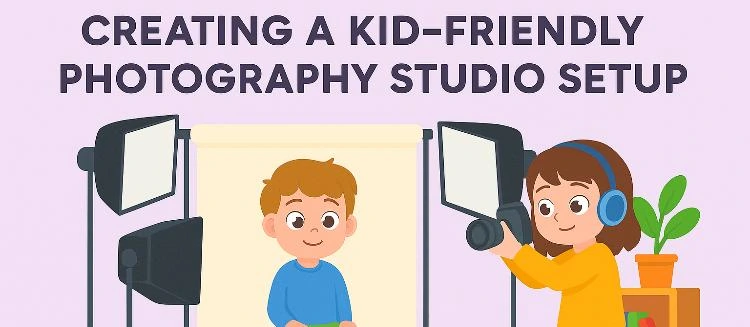Theodore Lowe, Ap #867-859
Sit Rd, Azusa New York
Find us here
Furniture Image Editing: Boost Your Online Sales

In today's competitive e-marketplace, presenting your furniture with high-quality images is essential for success. Potential buyers rely on visuals to make purchasing decisions, and eye-catching, professionally edited photos can be the difference between a conversion and a pass. Clear, detailed, and aesthetically pleasing images not only present your products in the best light but also build trust in your brand.
Customers are more likely to click on a product that looks inviting, resulting in higher traffic and an improved chance of making a sale. An investment in furniture image editing can effectively translate into increased profitability by showcasing your inventory more effectively.
The Impact of Visual Appeal on Online Furniture Sales
Imagine walking into a store where furniture is haphazard and poorly lit. Now, think about finding that perfect couch—it's challenging, isn't it? This scenario mirrors the experience of online shoppers when faced with low-quality images. High-quality visuals are crucial for selling furniture online. They breathe life into products and invite customers into a virtually staged world. Visual appeal in online furniture sales is not just an option; it's a necessity.
The Connection between High-quality Images and Customer Trust
A standout image can be the deciding factor for shoppers. Clear, high-resolution furniture images build trust. Customers can't touch or feel items online. So, images serve as the bridge to the tangible product. Quality images suggest a commitment to detail and reliability, imparting confidence to the buyer.
- Zoom features allow detail inspection, mimicking an in-store experience.
- Bright and true-to-color images reflect product authenticity.
- Consistent angles and lighting across images present a professional brand image.
Image Aesthetics and Conversion Rates
The influence of image aesthetics on conversion rates is significant. Appealing images catch the eye, encourage sharing, and can boost engagement across digital platforms. A strong visual representation of furniture can make or break a sale.
|
Feature |
Benefit |
|
High-Quality Images |
Increase customer time on page |
|
Lifestyle Context |
Help buyers visualize products in use |
|
Multiple Angles |
Provide a comprehensive view of the product |
In summary, furniture businesses must prioritize image editing as a key sales driver. Exceptional images equal exceptional sales figures. The journey to boost online furniture sales begins with the power of visual appeal.
Essential Photo Editing Techniques for Furniture
Online furniture sales thrive on stunning visuals. Quality photos can make the difference between a sale and a missed opportunity.
Images sell the dream of a stylish, comfortable home. A detailed photo editing process is crucial to showcase the true potential of your products. Let's dive into essential photo editing techniques.
Utilizing Correct Lighting and Shadows
Lighting and shadows can make or break furniture photos. Proper editing ensures your products look as good online as in real life. Use these steps:
- Brighten images to make them pop.
- Adjust shadows for a more natural look.
- Ensure consistency across all product images.
Background Removal and Color Correction
Backgrounds can distract from your furniture. Removing backgrounds highlights your products. Adjusting the colors ensures they appear true to life. Follow these actions:
- Cut out furniture from messy backgrounds.
- Use an even, neutral background for cohesion.
- Correct any color shifts to maintain accuracy.
Detail Enhancement for Texture and Material
Furniture isn't just about shape but also texture and material. Capture the essence with detail enhancements:
|
Texture |
Material |
|
Sharpen to show fabric weaves |
Highlight glossiness on wood |
|
Emphasize the softness of cushions |
Show off the elegance of metal accents |
Edit carefully to bring out the uniqueness of each piece.
Incorporating Lifestyle Imagery and Context
Furniture isn't just a product; it's part of someone's daily life. High-quality images can make furniture pieces stand out in the crowded online marketplace. Lifestyle imagery and context play a crucial role in connecting with potential customers. They can visualize the furniture in their own space, making it more appealing. This section explores how to create captivating visuals that boost online sales.
Creating Scene-setting Lifestyle Photos
Scene-setting photos tell a story by placing furniture in a styled room. They help customers imagine how the piece fits into their life. To do this:
- Choose a suitable backdrop that complements the furniture.
- Include other decor items to create a realistic scene.
- Ensure lighting is natural and highlights the furniture's best features.
For instance, a cozy armchair can be staged near a fireplace with a warm throw blanket to suggest comfort.
Utilizing 3d Renderings to Showcase Furniture
3D renderings are powerful tools in furniture image editing. They offer flexibility that traditional photography can't match. Some benefits are:
- Showing furniture in various settings and styles.
- Creating different color versions without physical samples.
- Rotating the furniture for a 360° view.
For instance, a 3D model of a sofa can be placed in different room settings to show versatility.
Overcoming Challenges in Furniture Image Editing
Furniture image editing can transform your online store. Your products must look their best. High-quality images attract customers. But editing furniture photos is not simple. There are challenges that need expert handling. Overcoming these challenges boosts online sales.
Handling Complex Shapes and Reflective Surfaces
Furniture has complex shapes. Sofas have curves. Chairs have intricate details. Editing these images takes skill. Transparent and reflective surfaces add another layer of difficulty. Glass tables reflect what’s around them. Shiny metals show reflections. These must look natural and appealing.
- Clipping paths help with complex shapes.
- Layer masks manage reflections.
- Retouching ensures edges are smooth and clean.
Each item must stand out. Details need to remain clear. Shoppers should see every angle. This is vital for their buying decision.
Balancing Authenticity with Aesthetic Improvements
Furniture edits should improve photos. They must not mislead the customer. Colors need to match the real items. Textures should feel tangible. Shadows give depth and reality. But photos also need a touch of magic. Aesthetic improvements make them pop.
Real and improved – that's the balance. Enhancements should be subtle. They must not take away from the product’s truth. This helps build trust with customers. They rely on images to decide.
- Color correction for true-to-life hues.
- Detail enhancement to highlight texture.
- Shadow adjustment for depth and realism.
The right edits enhance the shopping experience. They make the furniture irresistible. This drives more clicks and more sales.
Optimizing Images for Different Online Platforms
When selling furniture online, visuals are king. The right image can make or break a sale. Online platforms each have unique requirements for images, affecting how they display. This section dives into tips for optimizing furniture images across various online storefronts, ensuring they look great and load quickly.
Adjusting Image Formats and Dimensions for Web Use
Before uploading furniture photos online, correct formatting is crucial. Different image formats like JPEG, PNG, and WebP offer various benefits.
|
Format |
Pros |
Cons |
Best Use |
|
JPEG |
Smaller file size, wide support |
Lossy compression |
Product galleries |
|
PNG |
Transparent background, lossless |
Larger file size |
Logos with transparency |
|
WebP |
Best compression, quality |
Support varies |
Modern web UI elements |
Dimensions also matter. Online stores need fast-loading images, which means keeping file sizes small. Resize images for web display avoiding oversized pictures that slow down load times.
Platform-specific Image Strategies for Maximum Impact
Each online platform thrives with a tailored image approach. A compelling presentation in an online store can lead to more clicks and conversions.
- Amazon: White backgrounds, high resolution, zoom feature compatibility.
- Etsy: Lifestyle images, showcasing the furniture in use to evoke user experience.
- eBay: Multiple angles, detailed shots to gain buyer trust.
- Your Website: Brand-aligned imagery, consistency in style and lighting, room for creativity.
Ensure images adhere to the specific guidelines of each platform. Use analytics to test what works best. Try A/B testing with different images to see which ones perform better.
Measuring the Effectiveness of Image Editing In Sales
Making your product images shine is crucial in online retail. Eye-catching, high-quality images can significantly impact buyer decisions. But how do you know if your image editing efforts are paying off in sales? Tracking specific metrics is the key to understanding the effectiveness of image enhancements.
Tracking Conversion Rate Changes Post-editing
Conversion rates tell a clear story: are more customers buying after seeing your edited images? Keep an eye on sales figures before and after images are updated. An increase might confirm that your visual strategy works.
|
Time Period |
Conversion Rate Before |
Conversion Rate After |
|
January - March |
2% |
3.5% |
|
April - June |
2.5% |
4% |
Customer Feedback and Engagement Metrics
Customer reactions can indicate image success. Positive reviews and comments can point to satisfaction with image quality. Social media engagement also reveals customer preferences. Look for likes, shares, and comments on images.
- Reviews: Positive feedback post-image edit.
- Comments: More questions or interest shown in product details.
- Social Shares: Increased sharing of product images.
Using Analytics to Guide Further Edits
Analytics tools can track user behavior on your product pages. Pay attention to metrics like time spent on page and bounce rate. Improving images might keep customers engaged longer and reduce bounce rates.
- Measure time on page before and after image updates.
- Compare bounce rates for product pages with new images.
- Adjust images based on data to maximize engagement.
Conclusion
Elevating your product presentation with expert furniture image editing can significantly impact your online sales. It's not just about aesthetics; it's about trust and engagement. Clear, attractive images bring your furniture to life, enticing customers and setting you apart from competitors.
Related blog posts
Creating a Kid-Friendly Studio Setup: Ultimate Guide
Imagine capturing the pure joy and energy of children in your clothing photography. Sounds exciting, right?


